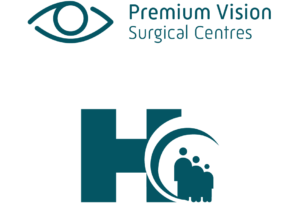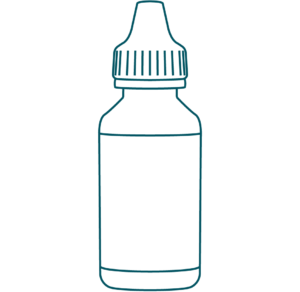Refractive Treatments
Refractive Surgery
If you have a refractive error, such as myopia, hyperopia, astigmatism or presbyopia, refractive surgery is a method for correcting or improving your vision. This surgical procedure is used to adjust your eye’s ability to focus light on the retina by reshaping the cornea (the clear front part of the eye). The most widely performed type of refractive surgery is LASIK (laser-assisted in situ keratomileusis) which uses a laser to reshape the cornea.
If you want to decrease your dependence on glasses or contacts, refractive surgery might be a good option for you. There’s no universally-accepted, best method for correcting refractive errors. The best option for you should be decided after a thorough examination and discussion about your lifestyle and vision needs with Dr. Youssef.
Refractive Lens Exchange (RLE)
Unlike cornea-based procedures like LASIK which alter the shape of the cornea, a refractive lens exchange (RLE) changes the lens within the eye. For this painless procedure, the eye’s natural lens is removed and replaced by an artificial lens implant (IOL) allowing the patient clear vision with focusing ability. There are different IOL options for each individual’s lifestyle needs.
RLE procedure are great for patients who aren’t suited for cornea-based laser procedures. Ideal candidates for RLE are hyperopic (far-sighted) patients in a range too high for laser vision correction.
Age tends to be one of the primary factors when considering a patient for RLE. Younger patients often have not yet lost accommodation (the ability to see up-close) or started to develop presbyopia and therefore aren’t usually good candidates.
Myopia is another important factor to evaluate when considering a patient for RLE. Patients with severe myopia have an increased risk of retinal complications like retinal detachment so it’s important to evaluate both the axial length of the eye and the patient’s risk for retinal detachment.
Procedure
During a RLE assessment appointment at PVSC, Dr. Youssef will discuss your replacement lens options (IOL) with you and will measure your eye to calculate your chosen IOL lens power. This will be your new lens after the old one is removed. To learn more about your IOL options, click here.
RLE is a simple outpatient procedure which takes around 10 minutes. To make the process even more efficient, Dr. Youssef performs bilateral simultaneous surgery, which means he operates on both eyes at the same time rather than waiting a week between eyes.
To begin, the eye is “frozen” in most cases with numbing drops, so no injection is needed. Patients are sedated if necessary. Dr. Youssef will create tiny incisions in the cornea to allow him to reach your lens which sits in a closed sac called the lens capsule. He will create a smooth, round opening in the lens capsule to be able to access the lens inside the capsule. Once open, an ultrasound probe is used to break down the lens and suction it out like a vacuum. Once the natural lens is removed and the lens capsule is empty, your chosen IOL can be implanted into the lens capsule. A patch is then placed over your eye(s) as you rest for observation to make sure no issues arise such as bleeding or a reaction to the anesthesia.
RLE costs depend on the stage of presbyopia (stage 2 or 3), which replacement lens option you opt for, and the type of surgery (traditional or laser-assisted). Some patients choose to undergo RLE while their presbyopia is still in early stages (1 or 2) for clearer vision and better focus. This is considered an elective surgery so insurance/healthcare doesn’t cover the replacement. By late stage 2 or 3, the lens is considered a cataract, so the surgery is no longer optional, but would be considered necessary which is covered by insurance/healthcare.
Your Surgical Choices
If RLE is recommended, you’ll need to make some important decisions about your surgery, such as:

Lens Replacement Options
When the natural lens is removed from your eye, it gets replaced with a new, clear artificial lens to restore your vision called an intraocular lens (IOL). Your eyes will be measured before surgery for the artificial lens which will be implanted during surgery, of which there are many options and will differ depending on your budget and lifestyle. While some lens options are covered by OHIP, other more premium options are not. Each IOL has pros and cons so make sure you research your options and discuss them with Dr. Youssef who can help you decide which one’s right for you.
Click here for a detailed look at your lens replacement options.

Surgery Location
You have the choice to undergo your surgery at either Premium Vision Surgical Centre (PVSC) or the Cornwall Community Hospital (CCH). PVSC is a private facility, known for its significantly shorter wait times compared to the hospital.

Eye Drops After Surgery
After cataract and RLE surgery, patients are prescribed 3-4 different eye drops for up to 5 weeks to control inflammation and infection after surgery. For some patients, this is a tedious and costly routine to follow. Depending on coverage, it might cost up to $150 per eye for patients under 65. Patients 65 and over can have their drops covered by Medicare (apart from the filling fees or copay).
To ease the financial burden on patients as well as the mental load of having to use the drops consistently, at PVSC we offer a new option – dropless surgery! Dropless involves injecting medication (a compound mixture of steroid triamcinolone and a 4th generation quinolone antibiotics, gatifloxacin) and moxifloxacin during the surgery. This way, patients are free from the tedious eye drop regimen and will only need to use drops if the eyes feel dry. The dropless option is especially beneficial for patients with arthritis or who have difficulty administering drops.
Known side effects of this method includes possible rise of eye pressure which might need treatment. A small number of patients may have some inflammation that requires eye drops to be started. It’s very important to avoid rubbing the eyes after surgery as rubbing your eyes can open the wound and introduce bacteria which can lead to serious infection inside the eye and can be blinding if not treated.
In an effort to address compliance and convenience, our patients are able to choose the post-surgery regimen that works best for their lifestyle. At PVSC, we offer:
Standard drops
Use the Medicare covered drops if you are 65+. Tobradex and Acuvail. Two drops for 2 weeks and one drop for 5 weeks total. This option is okay with some precautions.
Possible side effects are increased eye pressure with Tobradex due to the strong steroids, and eye burning sensation after using Acuvail (which lasts about a minute).
The penetration of the Tobramycin antibiotic into the inside of the eye is not as good as the penetration of the 4th generation quinolone antibiotics like in the dropless option.
Dropless
This approach is highly convenient and effective, and we strongly recommend it! During the procedure, moxifloxacin is injected inside the eye to prevent infection, while triamcinolone and moxifloxacin are injected outside the eye, under the conjunctiva, for additional protection and to reduce inflammation. This method ensures a comprehensive treatment, targeting different areas of the eye for optimal results.
